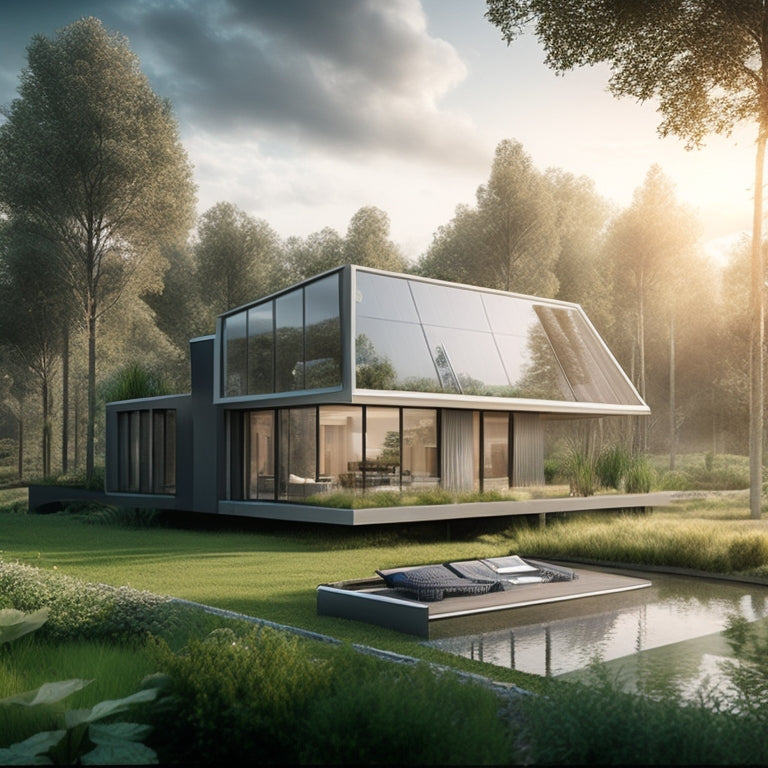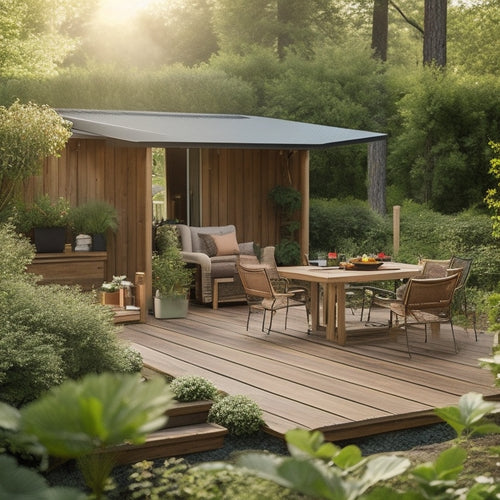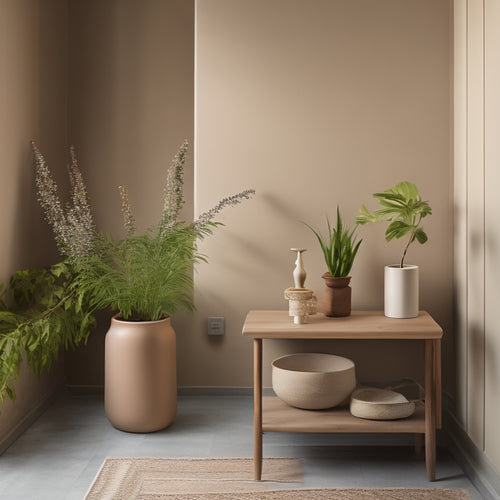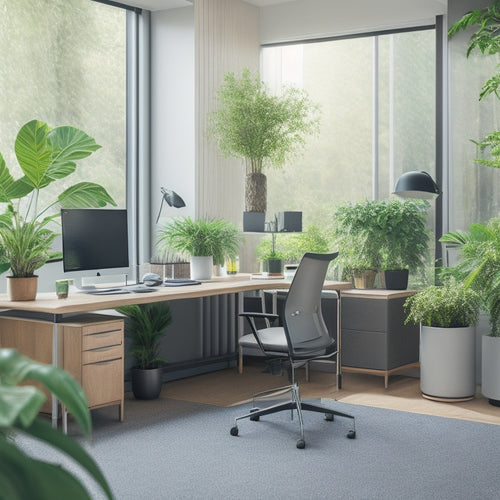
3 Best Net-Zero Home Design Tools for 2023
Share
You're on the hunt for the best net-zero home design tools to bring your sustainable living space to life. Autodesk Revit, SketchUp, and ArchiCAD top the list for 2023, offering a range of features to optimize energy efficiency and reduce emissions. Revit provides seamless integration with BIM models, while SketchUp boasts a user-friendly interface. ArchiCAD stands out with its advanced design integration and collaboration focus. When choosing the right software, consider energy modeling capabilities, efficiency metrics, and customization options. Now that you've got a starting point, you can investigate the subtleties of each tool to find the perfect fit for your net-zero home design project.
Key Takeaways
- Autodesk Revit and ArchiCAD are top choices for net-zero home design, offering seamless BIM integration and advanced features for energy efficiency.
- SketchUp is a user-friendly option for beginners, allowing easy integration with various design tools and a gentle learning curve.
- Blender is a free and open-source alternative, providing high customizability but requiring a steeper learning curve.
- When selecting a tool, consider usability factors such as design integration, customization, and user experience to ensure a smooth workflow.
- Energy efficiency tools like energy modeling capabilities and solar panel array design principles can help optimize net-zero home performance.
Top Net-Zero Design Features
Several key design features distinguish net-zero homes from traditional buildings, and incorporating these elements is vital to achieving a carbon-neutral footprint.
You'll want to take into account passive solar design, which involves strategically placing windows and insulation to utilize natural light and heat. This approach reduces the need for artificial lighting and heating, minimizing your energy consumption.
Additionally, incorporating green hydrogen fuel cells can provide a reliable source of clean energy, and utilizing biodiesel fuel systems can reduce emissions and lower energy costs.
Another important element is thermal mass, which refers to materials with high heat capacity, such as concrete or brick, that absorb and release heat slowly. By incorporating thermal mass into your design, you can regulate your home's temperature more efficiently.
These design features work together to create a comfortable, sustainable living space that's kind to the environment.
Comparing Energy Efficiency Tools
As you investigate net-zero home design, selecting the right energy efficiency tools becomes essential to optimizing your building's performance.
You'll want to compare tools based on their energy modeling capabilities, which simulate your building's energy consumption and identify areas for improvement. Look for tools that provide detailed efficiency metrics, such as energy usage intensity (EUI) and energy cost savings.
Additionally, consider incorporating solar panel array design principles to maximize energy production and reduce waste. Some tools may offer advanced features like thermal bridging analysis or daylighting simulations.
Consider the level of customization and flexibility you need, as well as the tool's compatibility with your design software. By evaluating these factors, you can choose the energy efficiency tool that best fits your design goals and helps you achieve a net-zero home.
Choosing the Right Software
When you're tasked with selecting the ideal software for your net-zero home design, it's crucial to evaluate the capabilities of various options against your specific needs. You'll want to take into account factors like software usability, design integration, and the level of customization offered.
| Software | Design Integration | Software Usability |
|---|---|---|
| Autodesk Revit | Seamless integration with BIM models | Steep learning curve, but powerful features |
| SketchUp | Easy integration with various design tools | User-friendly interface, ideal for beginners |
| Blender | Free and open-source, with a large community | Steep learning curve, but highly customizable |
| ArchiCAD | Advanced design integration with BIM models | User-friendly interface, with a focus on collaboration |
Frequently Asked Questions
Can I Design a Net-Zero Home Without Extensive Architecture Experience?
You can design a net-zero home without extensive design experience by focusing on design basics, like passive solar orientation and insulation, and incorporating sustainable materials, like recycled glass and low-VOC paints, into your plan.
How Do I Ensure My Design Meets Local Building Codes and Regulations?
You'll need to research local building codes and regulations to guarantee compliance, considering factors like zoning laws, energy efficiency standards, and sustainable materials; consulting with local authorities or designers can help you steer through the process efficiently.
Are Net-Zero Home Design Tools Compatible With Mac and Pc?
You'll find that most net-zero home design tools offer a user-friendly interface, ensuring seamless software accessibility across both Mac and PC platforms, giving you the freedom to design efficiently, regardless of your computer preferences.
Can I Collaborate With Others in Real-Time Using Net-Zero Design Software?
You can collaborate with others in real-time using net-zero design software, receiving instant design feedback and iterating together seamlessly, as many tools offer live collaboration features, enabling you to work freely with your team, anywhere, anytime.
Do Net-Zero Home Design Tools Provide Cost Estimates and Budgeting Features?
You'll be interested to know that 75% of homeowners consider budget a top priority when building a net-zero home. Fortunately, many design tools offer cost estimation and budgeting analysis, allowing you to track expenses and make data-driven decisions to stay within your means.
Related Posts
-

Green Deck Options: Earth-Conscious Choices for Your Home
You're looking for a deck that not only enhances your home's exterior but also aligns with your eco-friendly values. ...
-

What Are Natural Clay Paints for Green Home Interiors?
You're about to uncover a game-changing alternative to synthetic paints that not only enhances the aesthetic of your ...
-

What Air Purifiers Save Energy in Work Areas?
You can cut energy costs and reduce your carbon footprint by choosing air purifiers designed with energy efficiency i...


